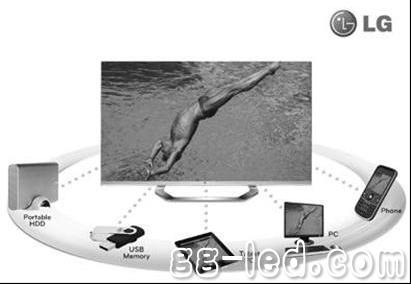In addition, the application of smart energy-saving technology makes the energy-saving effect of LG Cinema non-flash 3D TV more obvious. The technology can automatically adjust the screen brightness according to the environment, and its large/medium/small/off/auto 5-speed integrated backlight control, screen off, standby micro-power consumption function can effectively reduce power consumption and maximize the energy saving effect of the TV. At the same time, the color and brightness of the image are not damaged, and the viewing effect is guaranteed.
LG Cinema's non-flash 3D TV's 1mm narrow-edge design allows TV screens to break through the boundaries and create an "unlimited" 3D visual experience that lets viewers see the scene. This TV adopts the original non-flash 3D technology, which effectively solves the problems of the first-generation shutter-type 3D image stroboscopic, image ghosting, gray image and crosstalk of left and right eye signals. The picture is clear and the color is bright, 3D image The quality has improved significantly. And the non-flash 3D TV has a wider viewing field and can meet the viewing needs of multiple angles.
It is reported that LG Cinema's non-flashing 3D TV series products have reached the national level 1 energy efficiency standards, and can obtain energy saving subsidies for national appliances ranging from 350 to 400.


The name of wireless router can be separated out of two keywords: wireless and routing. Understand the technical principle behind these two words, you understand the wireless router.
Wireless is also what we often call Wi-Fi. Wireless routers can convert home broadband from wired to wireless signals, and all devices can happily surf the Internet as long as they connect to their own Wi-Fi. In addition, these devices also form a wireless local area network, where local data is exchanged at high speed and is not limited by the bandwidth of home broadband.
For example, many people have smart speakers in their homes that can be used to control various smart appliances. When you say small X small X, turn on the TV, the speaker actually finds the TV through the LAN and sends instructions, and does not need to connect to the Internet; And if you let it broadcast news, you have to get data through the Internet.
The Local Area Network we talked about earlier, also known as the Intranet, is represented by the Local Area Network (LAN) on the router, so the Wi-Fi signal is also called WLAN(Wireless LAN); The Internet we want to access, also known as the extranet, is represented on the router by the WAN(Wide Area Network).
On the Intranet, the IP address of each device is different, which is called a private address. All devices on the Internet share the same public address, which is assigned by broadband operators such as China Telecom Unicom.
The router is the bridge between the Intranet and the external network. The above mentioned IP address translation, packet forwarding, is the router routing function.
In other words, the router is the hub of the home network, and the data of all the devices must be forwarded through it to access each other or reach the external network, which means that one husband is the key and ten thousand men are not open, so the comprehensive router is also called "home gateway".
Wireless Router,Wifi 6 Wireless Router,Mesh Wifi Router,Wifi Routers For Home
Shenzhen MovingComm Technology Co., Ltd. , https://www.movingcommiot.com
